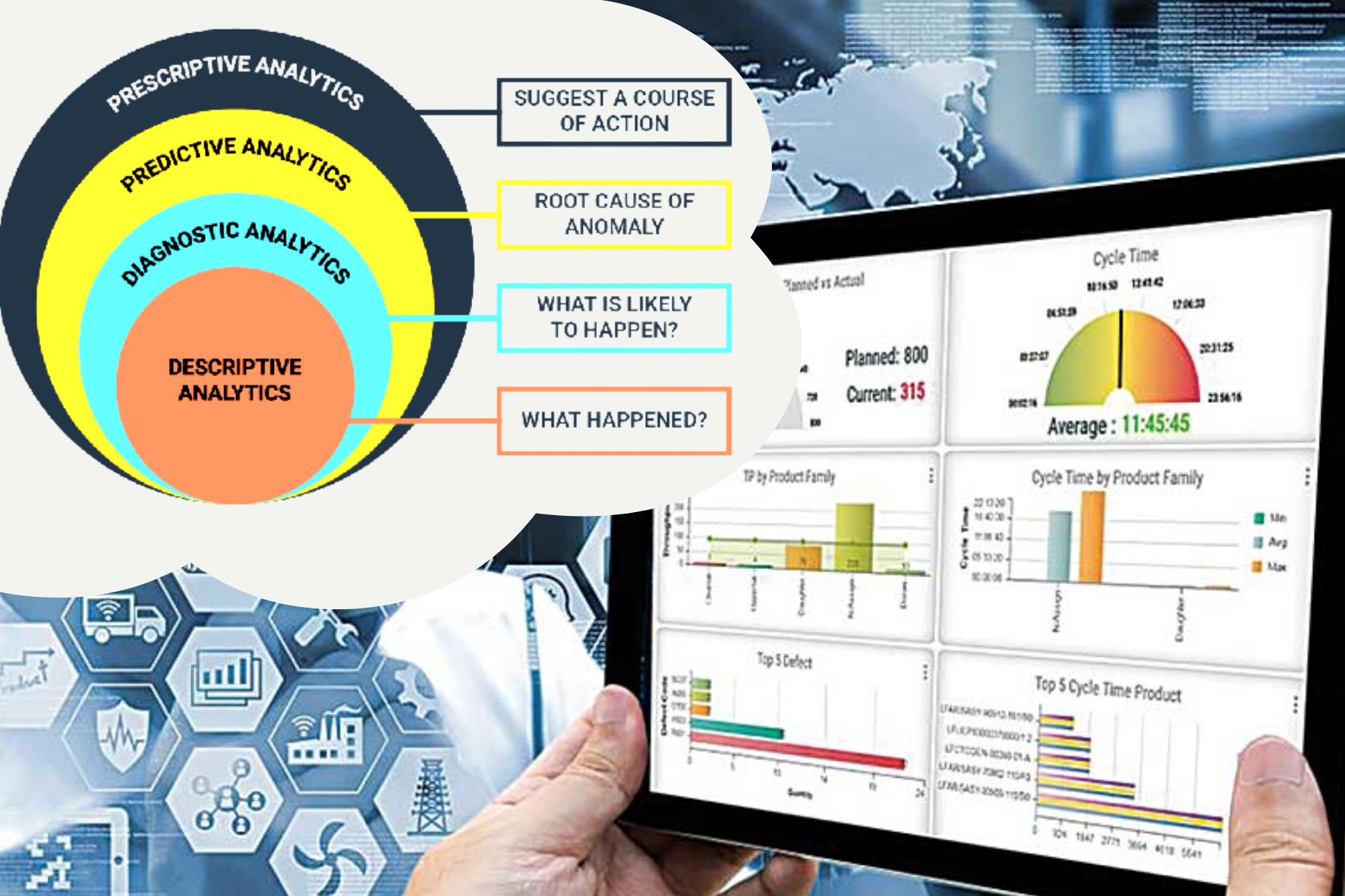Data analytics in manufacturing is the process of collecting, analysing, and interpreting data from various sources within a manufacturing organization. The goal of data analytics in manufacturing is to improve efficiency, productivity, and overall performance by identifying patterns and trends in the data that can inform decision making and strategy.

Type of Data Analytics in Manufacturing

Descriptive Analytics
To summarize and describe data, such as calculating averages or identifying trends and relationships. Visualization of data using BI Tools.

Diagnostic Analytics
To investigate and explain data, such as identifying the cause of a problem or determining the root cause. It gives the reason why something happened.

Predictive Analytics
To make predictions about future events or trends based on historical data, such as forecasting sales or identifying potential customer churn.

Prescriptive Analytics
To recommend actions or decisions based on data, such as identifying the best marketing strategy or help businesses make better decisions using data.
Benefits of Data Analytics in Manufacturing

Quality Control
Identify patterns and trends in quality data, allowing manufacturers to identify and address issues before they become a problem.

Production Optimization
Improve efficiency and productivity by identifying bottlenecks and inefficiencies in the production process.

Predictive Maintenance
Predict when equipment is likely to fail, allowing manufacturers to schedule maintenance and avoid unexpected downtime.

Supply Chain Optimization
Improve logistics and distribution by identifying patterns and trends in inventory and demand data.

Energy Management
Monitor and optimize energy consumption, helping manufacturers reduce costs and improve environmental sustainability.

Process Control
Monitor and control manufacturing processes, including temperature, pressure, and other critical parameters.

Performance Monitoring
Track and monitor the performance of machines, operators, and other key resources, allowing manufacturers to identify areas for improvement and make data-driven decisions.

